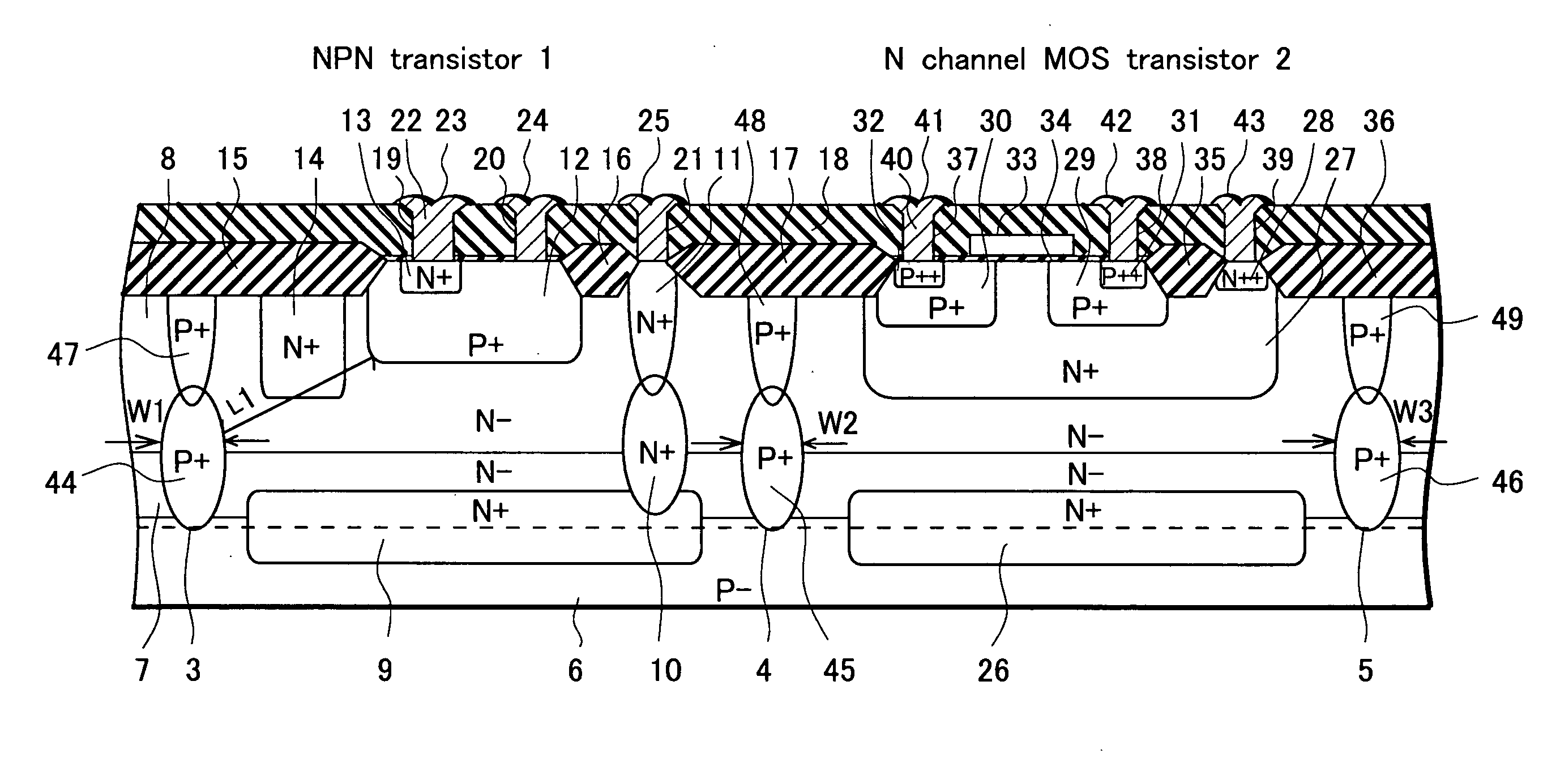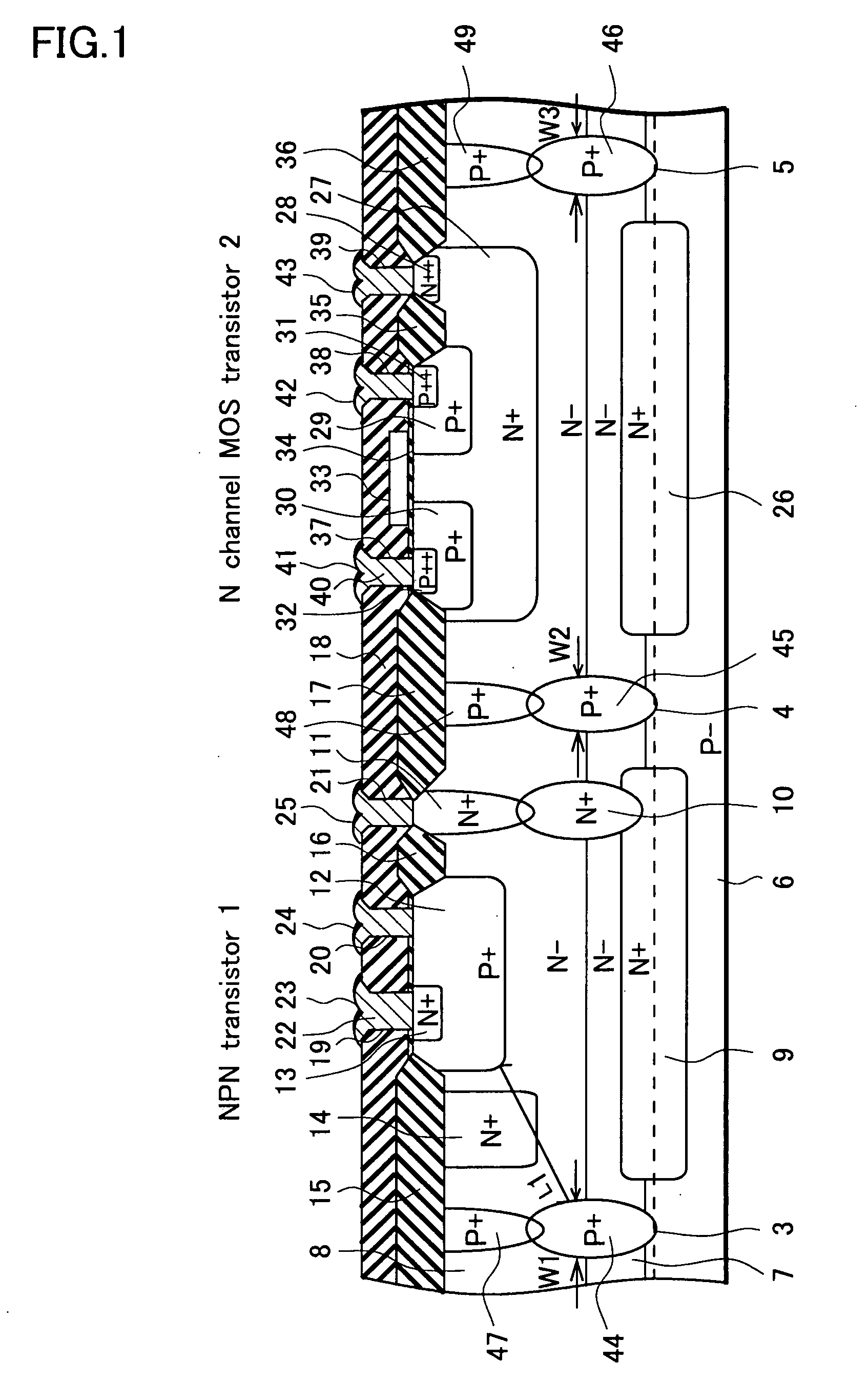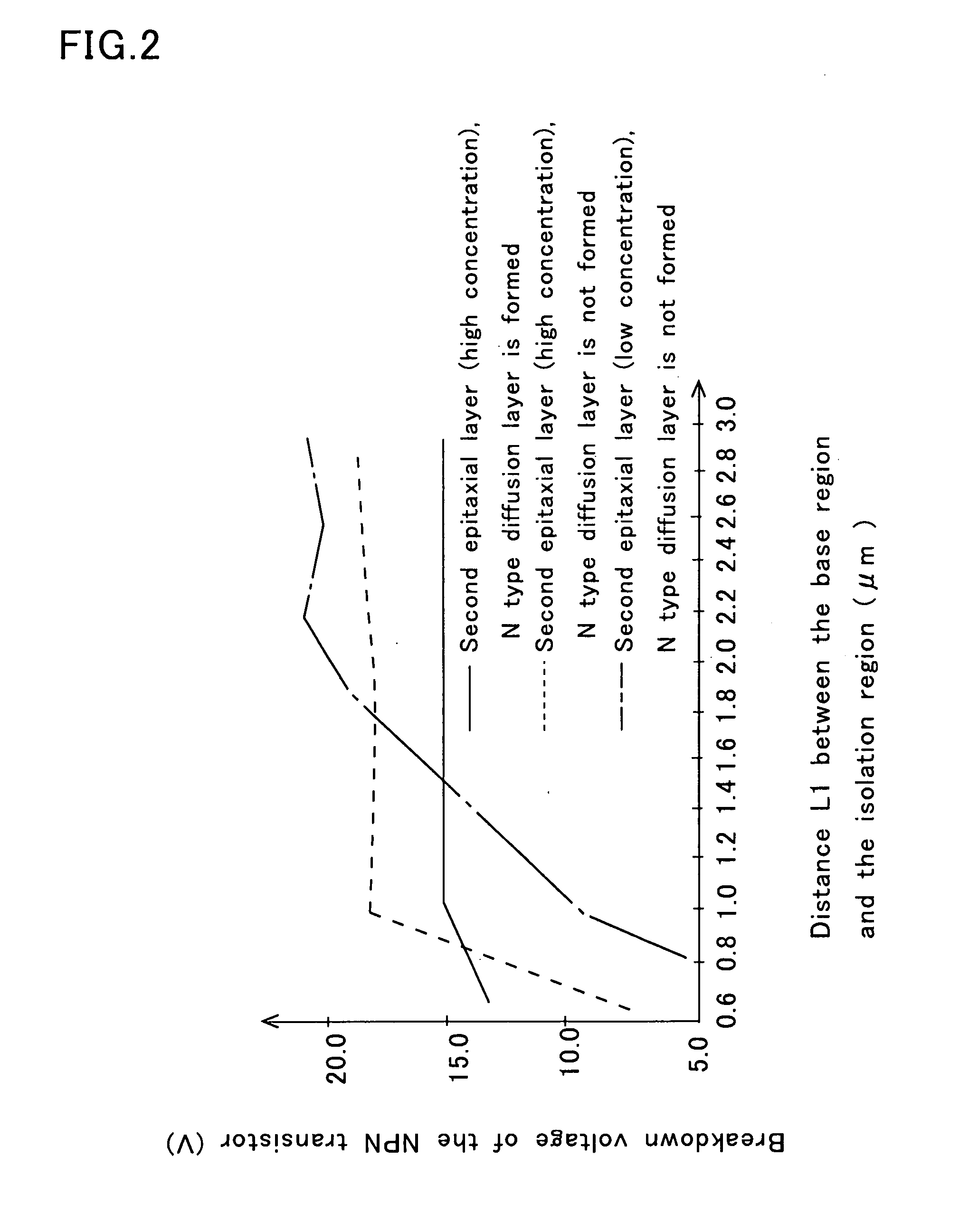Semiconductor device and manufacturing method of the same
a technology of semiconductors and semiconductors, applied in semiconductor devices, electrical devices, transistors, etc., can solve the problem of difficult short-circuit between the base region and the isolation region, and achieve the effect of reducing the size of the device, and improving the breakdown voltage characteristics
- Summary
- Abstract
- Description
- Claims
- Application Information
AI Technical Summary
Benefits of technology
Problems solved by technology
Method used
Image
Examples
Embodiment Construction
[0024] With reference to FIGS. 1 and 2, a semiconductor device according to an embodiment of the present invention will be described in detail below. FIG. 1 is a cross-sectional view illustrating the semiconductor device according to this embodiment. FIG. 2 is a graph illustrating breakdown voltage characteristics of the semiconductor device according to this embodiment.
[0025] As shown in FIG. 1, an NPN transistor 1 is formed in one of element formation regions divided by isolation regions 3, 4 and 5, and an N channel MOS (Metal Oxide Semiconductor) transistor 2 is formed in another element formation region. Note that, although not shown in FIG. 1, a P channel MOS transistor, a PNP transistor and the like are formed in other element formation regions.
[0026] As shown in FIG. 1, the NPN transistor 1 is mainly configured of: a P type single crystal silicon substrate 6, N type epitaxial layers 7 and 8, N type buried diffusion layers 9 and 10 used as a collector region, an N type diffu...
PUM
 Login to View More
Login to View More Abstract
Description
Claims
Application Information
 Login to View More
Login to View More - R&D
- Intellectual Property
- Life Sciences
- Materials
- Tech Scout
- Unparalleled Data Quality
- Higher Quality Content
- 60% Fewer Hallucinations
Browse by: Latest US Patents, China's latest patents, Technical Efficacy Thesaurus, Application Domain, Technology Topic, Popular Technical Reports.
© 2025 PatSnap. All rights reserved.Legal|Privacy policy|Modern Slavery Act Transparency Statement|Sitemap|About US| Contact US: help@patsnap.com



